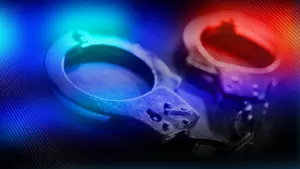More Stories
The red zone microclusters are showing improvement,
according to COVID-19 infection data provided by the state.
Gov. Andrew Cuomo provided an
update Wednesday morning on how the different zones would be adjusted based on
the percentage of infections in those areas.
According to the governor:
- In order to exit a red zone, the area must be under 3%
infection rate for 10 days. In less populated areas, it's 4%.
- To exit an orange zone, the area must be under 2% after 10
days, 3% in less populated areas.
- To exit a yellow zone, the area must be under 1.5% after
10 days, 2% in less populated areas.
During the last week of September, the infection rates were:
- Brooklyn: 7.7%
- Queens: 4.1%
- Far Rockaway: 3.2%
- Rockland: 13.1%
- Orange: 34.2%
In the past seven days, the infection rate has been:
- Brooklyn: 5.5%
- Queens: 2.5%
- Far Rockaway: 1.8%
- Rockland: 4.2%
- Orange: 4.5%
While areas in Queens will be moving from red to orange, the
red zones in Brooklyn and the mid-Hudson region will remain unchanged.
Town of Ramapo Supervisor Michael B. Specht declined to comment on the ongoing restrictions.
Rockland County Executive Ed Day says, “It’s clear if we abide by the restrictions and continue to take preventative actions, we will soon reach the metric required to exit a red zone.”
Rockland County has received more than 40 complaints since ordering residents to wear face coverings. So far, three violations have been issued.
Gov. Cuomo says he believes more microclusters will come in
New York during the fall season, and he doesn’t believe vaccines will be
available this December.
He urged New Yorkers not to be “fatigued” by COVID-19 and to
remain vigilant against the virus.
The governor also said that New Jersey and Connecticut would
remain off the travel advisory list despite a rise in cases.
“States are not set up to do border control,” he said,
stating that their inclusion would create an economic problem and would be
“impossible.”
More from News 12
1:59

Mount Vernon police investigate homicide at apartment complex
2:03

Pleasant Sunday; unsettled weather in the Hudson Valley during Thanksgiving week

Suspect arrested in fatal stabbing of 68-year-old man in Mount Vernon
2:20

New Rochelle holds rally in support of NY AG Letitia James ahead of federal trial
1:39

Yonkers first responders, volunteers hand out hundreds of Thanksgiving meals
0:34
